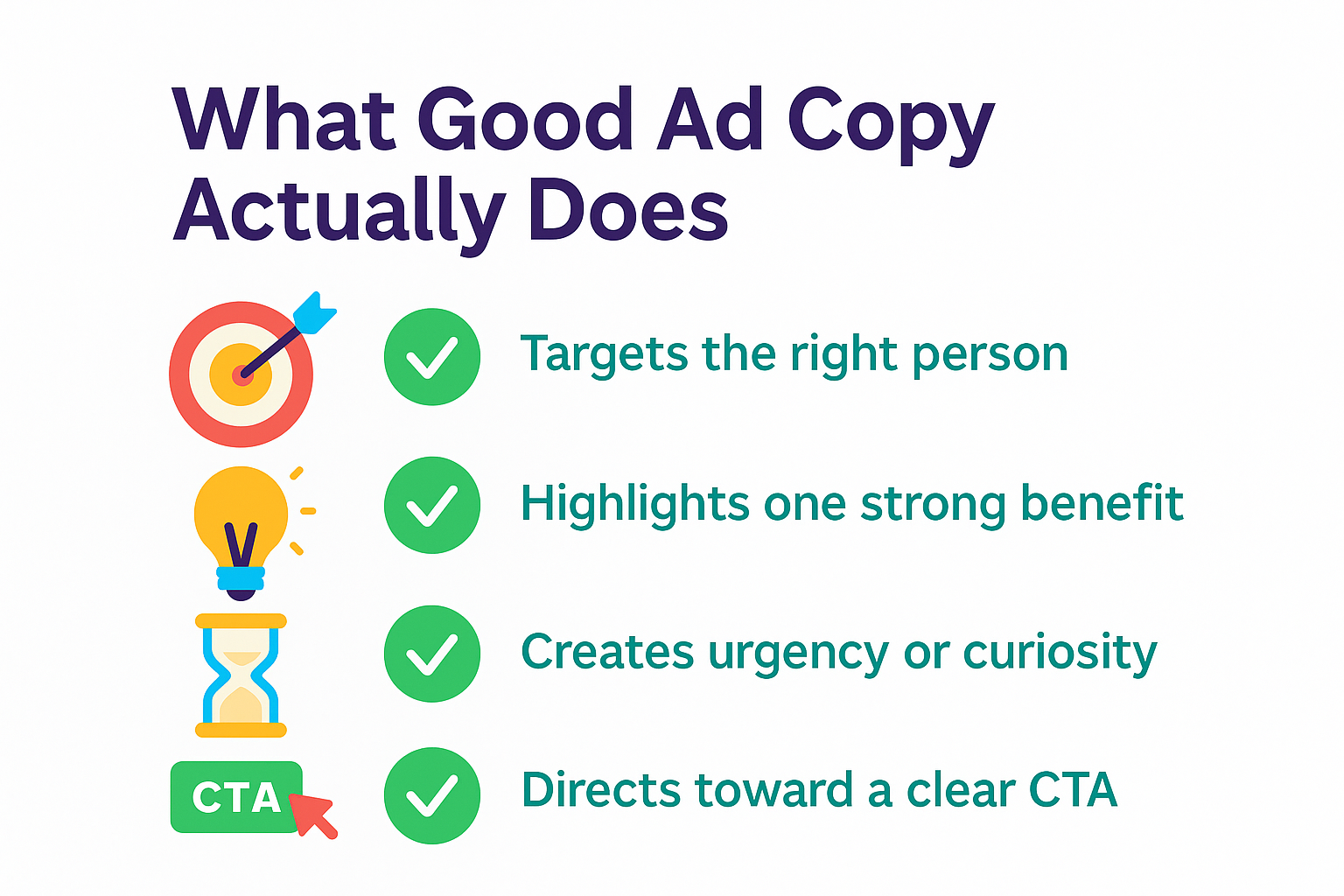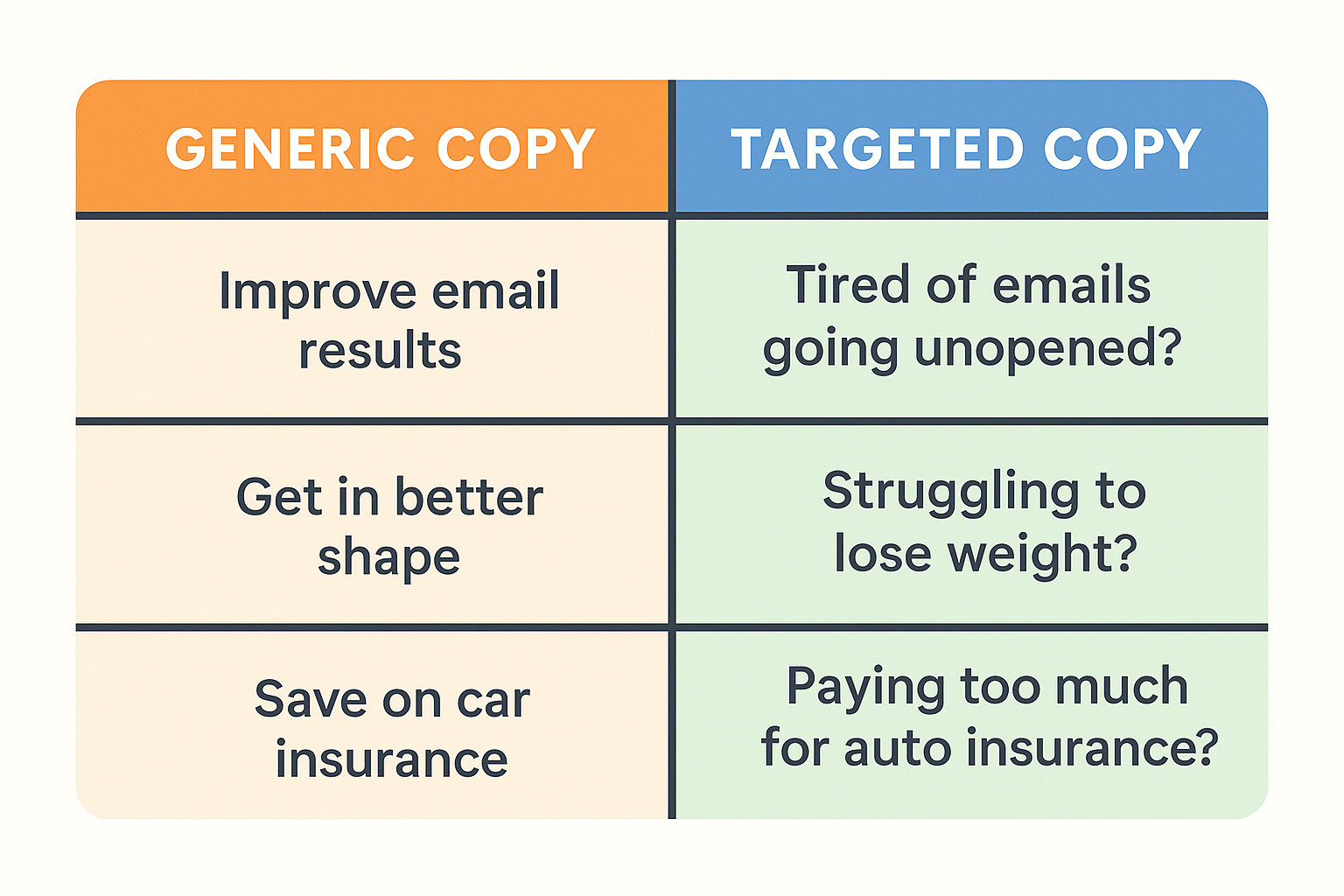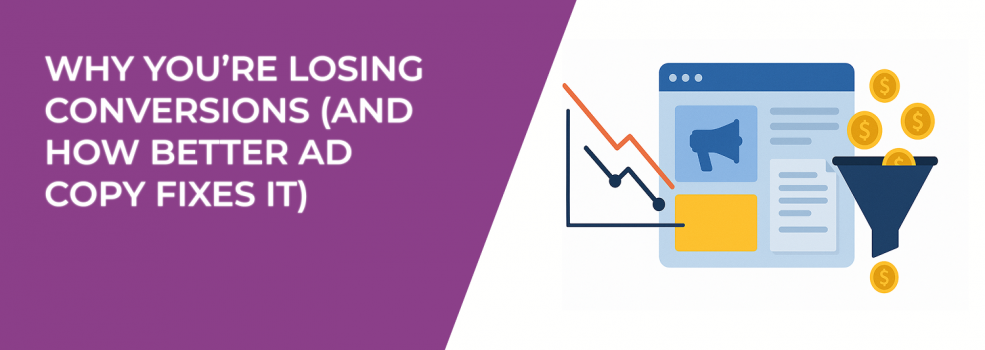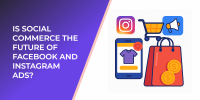You’ve set up the right audience targeting. Your visuals are on brand. The clicks are happening.
But when you check your results, the conversion rate is frustratingly low. And that disconnect between traffic and results? It’s usually not because of your product — it’s often your messaging.
The truth is, many advertisers overlook one of the most critical parts of their ads: the copy. If your words aren’t doing the heavy lifting, even the best-looking campaigns can stall.
Let’s dig into why weak ad copy might be dragging your conversions down and how you can start fixing it today.
The Real Cost of Weak Ad Copy
Think of ad copy as your digital elevator pitch. You’ve only got a few seconds to make an impression, and vague or confusing messages lose people fast.
Here are some common patterns found in underperforming ads:
-
Vague promises, like: “We offer solutions for your business.”
-
Overuse of buzzwords, such as: “Next-gen, AI-powered automation.”
-
Trying to speak to everyone, which results in speaking to no one.
These types of ads feel impersonal, unclear, and ultimately forgettable.
If your audience doesn't instantly recognize the relevance of your message, they'll scroll right past it. Worse, they might click out of curiosity — but drop off before converting because the value wasn't clear or convincing.
For more on how this happens (and how to fix it), see Facebook Ads Not Converting: How to Fix It.
What Good Ad Copy Actually Does
Effective copy isn't just about sounding clever. It's about communicating clearly, making people care, and prompting action.

When your copy works well, it will:
-
Call out the right person, so they feel seen and understood.
-
Focus on one strong benefit, not a laundry list of features.
-
Create a sense of curiosity or urgency, without relying on hype.
-
Direct the user toward one clear action, like signing up or making a purchase.
These principles apply whether you're writing for Facebook, Instagram, TikTok, or email. Great copy cuts through noise — and makes people want to act.
Need inspiration? Crafting Compelling Facebook Ads Copy That Converts offers strong examples of how to say more with fewer words.
1. Start With a Specific Pain or Desire
You need to open your ad with something your audience already cares about. That means tapping into a specific frustration or goal.
Here’s how this works in practice:
-
Weak approach: “Get better results with our email tool.”
-
Stronger approach: “Tired of emails that go unopened? Start writing subject lines people actually click.”
The second example speaks directly to a pain point. It also hints at a solution, making the reader curious about how your tool can help.
Focusing on pain or desire builds emotional connection — and that connection leads to clicks.
2. Ditch the Jargon — Talk Like a Real Person
Too many ads read like a press release or a tech manual. That’s a problem.
You don’t need to sound “professional” — you need to sound human. Clear, conversational language builds trust and keeps people engaged.
Avoid copy like:
-
“Optimize operational efficiency with end-to-end automation.”
Instead, try:
-
“Save hours each week by automating the stuff you hate doing.”
The second example is casual, but it’s clear and relatable. It gets straight to the benefit, with none of the fluff.
Talk to your audience like you’d explain your offer to a smart friend. That’s when people start listening.
3. Focus on One Thing — Then Drive It Home
Your ad doesn’t need to explain everything. It needs to deliver one message well.
When ads try to squeeze in too many points, nothing sticks. That’s why it’s better to highlight one benefit and lead with that.
Compare the two styles:
-
Too broad: “Our platform helps with targeting, engagement, analytics, and campaign performance.”
-
More focused: “Find your perfect audience in under 5 minutes — no filters, no guesswork.”
Which one are you more likely to remember?
Simple and specific always beats long and general. If your offer has multiple benefits, test each in a separate ad instead of combining them all.
4. Use Social Proof — But Keep It Meaningful
You’ve probably seen claims like “trusted by 10,000+ customers” before. It’s fine — but not very persuasive on its own.
Social proof works best when it’s specific and tied to a result.
For example:
-
“Over 12,000 marketers use LeadEnforce to build hyper-targeted Facebook audiences — and pay less per click.”
Even better? Add a real testimonial or use-case quote if the platform allows it.
Social proof shows that your offer works in the real world — not just in theory.
5. Give Them One Clear Next Step
The final piece is your call to action (CTA). It should be simple, clear, and feel like a logical next move.
A weak CTA sounds generic:
-
“Learn more.”
A better one is more specific and appealing:
-
“See how much better your targeting could be.”
Or:
-
“Try it free — no setup needed.”
The key is to make the CTA feel useful and low-risk. When people know what to expect, they're more likely to take action.
Common Ad Copy Mistakes That Kill Conversions
Even small flaws in your copy can lead to big drop-offs.

Here's what to look for when reviewing your ads:
-
Too many messages crammed into one space, making it hard to follow.
-
No emotional hook or relevance, so the user doesn’t feel invested.
-
Unclear headlines, which fail to explain the value quickly.
-
A missing or generic CTA, leaving users unsure what to do.
-
Overuse of vague buzzwords, which dilutes the message.
Sometimes the issue isn’t even in the copy itself — it’s that the message doesn’t match the audience. If that sounds familiar, Why Your Facebook Ads Look Great But Still Don’t Sell explains how to spot (and fix) the mismatch.
Want to Improve? Start Testing Your Copy Now
Here’s the good news: ad copy is one of the easiest things to test and improve.
You don’t need to rewrite your whole strategy. Just start running small A/B tests with:
-
Different headline angles, like problem-focused vs. benefit-focused.
-
Tone experiments, such as emotional vs. data-driven.
-
Length variations, from punchy one-liners to longer lead-ins.
-
Specifics vs. generalities, including real numbers or user quotes.
Even minor changes — a new headline or CTA — can increase your CTR and dramatically improve conversions. For practical testing tips, check out The Benefits of Testing Facebook Ad Copy Variations for Better Performance.
Final Thought: Conversions Come From Clarity
People don’t convert because they’re impressed by clever slogans. They convert because they see something that feels relevant and worth clicking.
Great ad copy gets there by being simple, direct, and focused on the reader. It doesn’t try to impress — it aims to connect.
So if your conversions are lagging, stop tweaking the design for now. Revisit your message. Sharpen your words. Be more specific. And speak like a human.
And if you want to see how better messaging fits into your entire campaign structure, Facebook Ads Funnel Strategy: From Audience Identification to Conversion offers a detailed breakdown.

